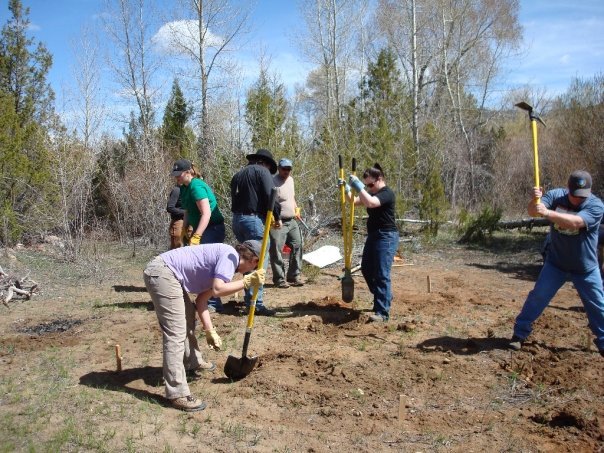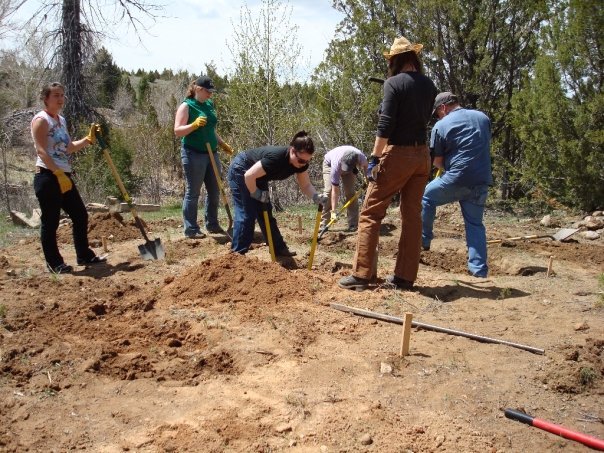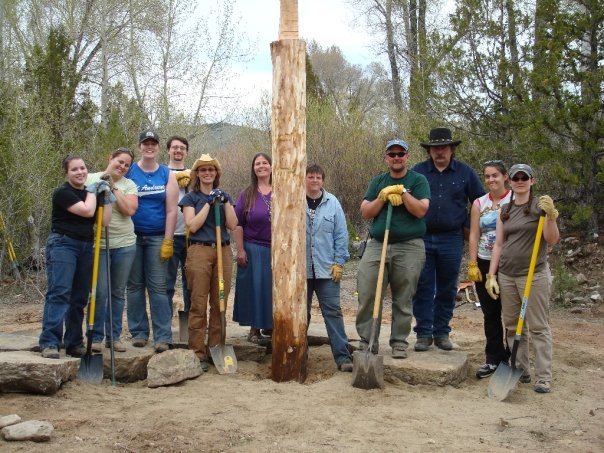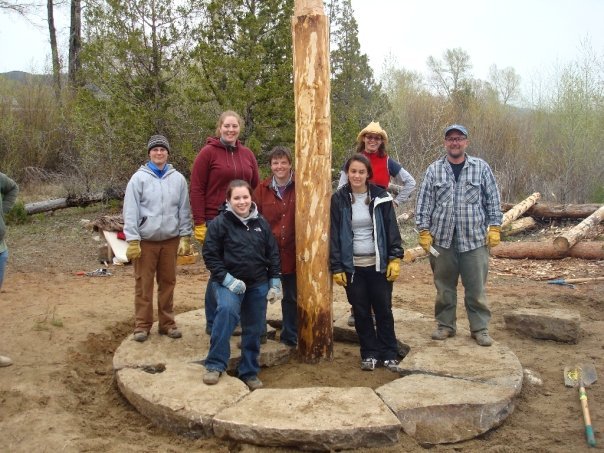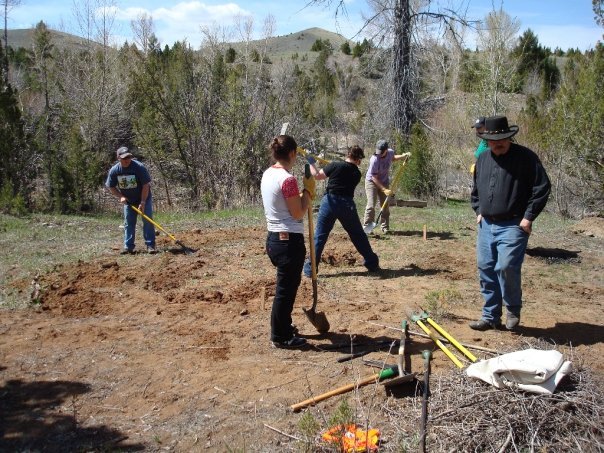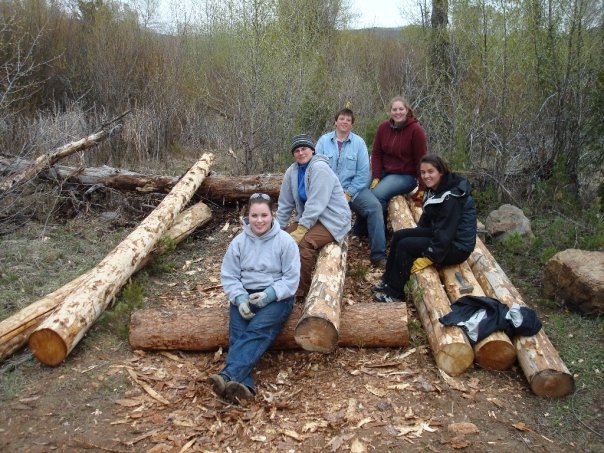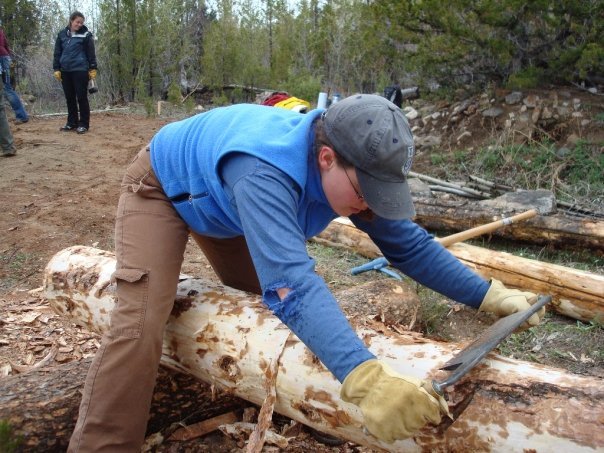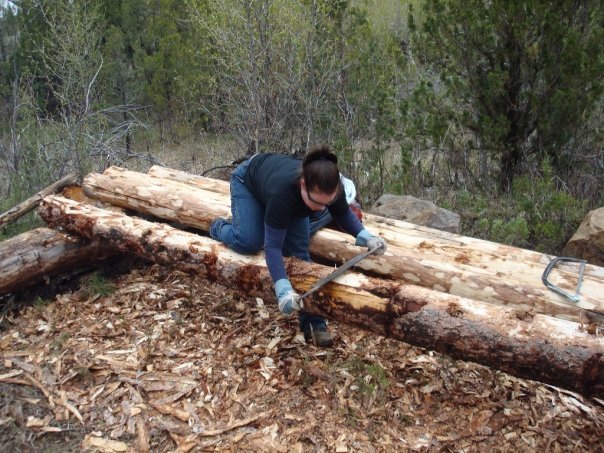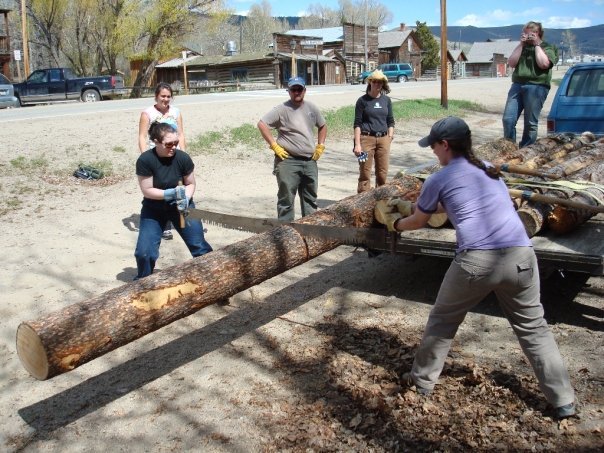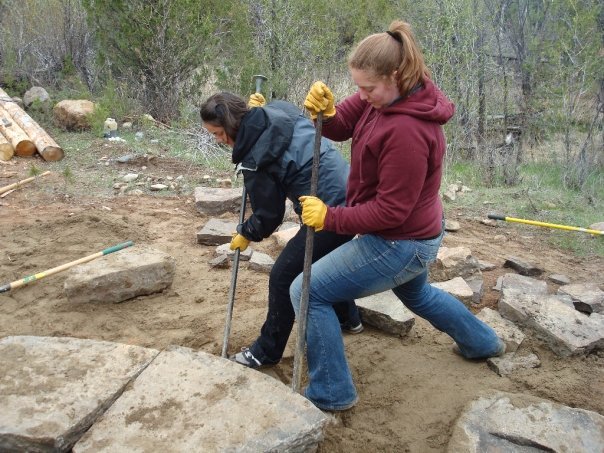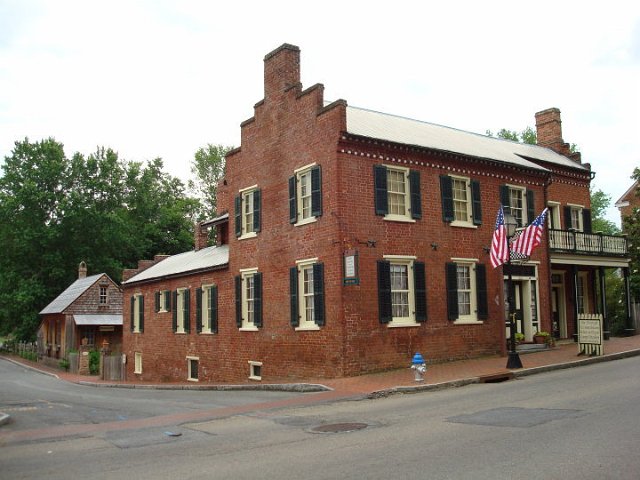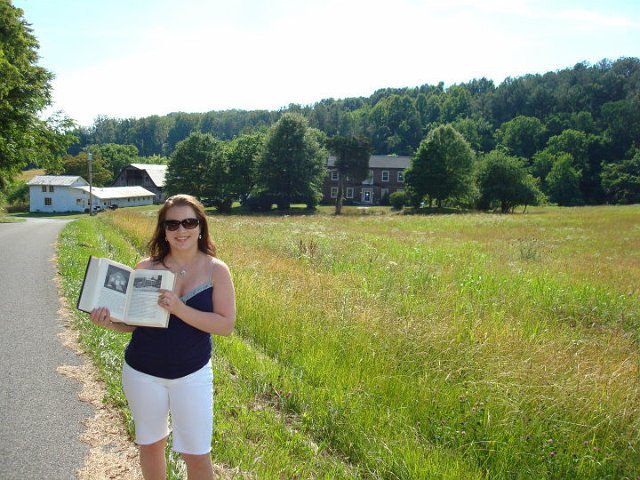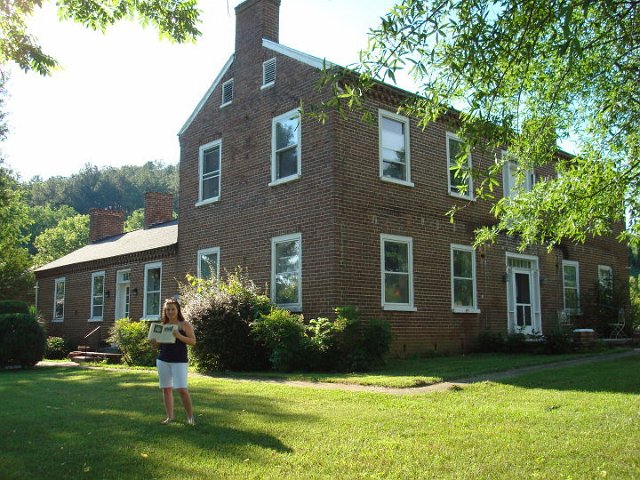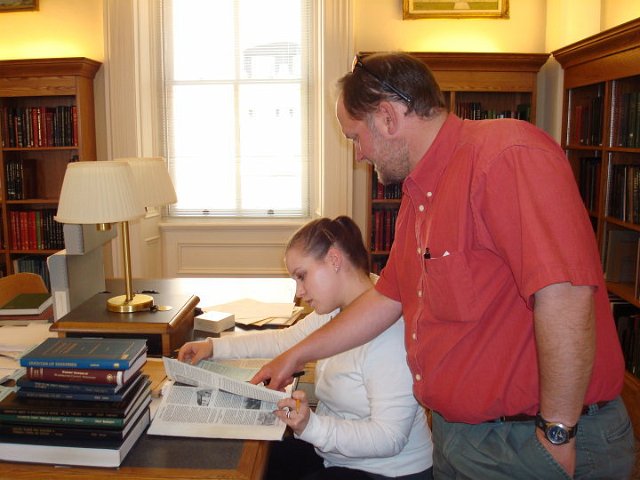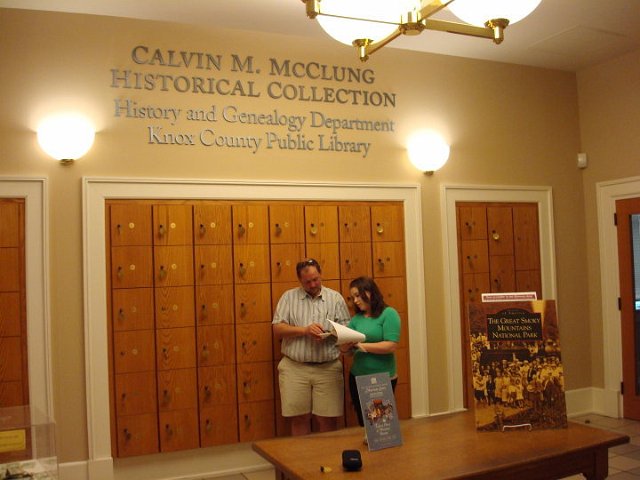 Finding Sarah Gammon Bickford
Finding Sarah Gammon Bickford
National Trust for Historic Preservation Partnership in Scholarship Grant Building Freedom in the Territorial West
by Bill Peterson, Ph.D. and Orlan Svingen, Ph.D.
Searching the past for the history of a teenage slave is like searching through the fog for a ghost. That is, however, precisely what Washington State University Ph.D. student Laura Arata and I have been engaged in during the 2010/2011 academic year. In November of 2009, the Montana Heritage Commission, WSU Professor Orlan Svingen, WSU PhD student Laura Arata, and I received a Partnership in Scholarship Grant from the National Trust for Historic Preservation. The goal of the grant, when the project is complete in 2011, is for our work to serve as a national model for researching and interpreting African Americans in places where they have been largely overlooked, especially in the west. The Ford Foundation provides the National Trust funding for the program, and the focus for this grant is Sarah Bickford and other former slaves living in Virginia City, Montana, circa 1865-1900.
I have been researching Sarah Bickford for a decade, and I am intensely interested in this woman and her life prior to her arrival in Montana. Grant funding allowed Arata and I to focus our research into Sarah’s early life in Tennessee before she traveled west. In this brief write-up, I will share the findings of our research into the early life of Sarah Bickford.1
In June of 2010, Arata and I traveled to Tennessee to research archival collections dealing with Sarah’s early life. In preparation for the trip, I contacted the Tennessee Historical Society and several of my colleagues at the American Association of State and Local History, both based in Nashville, hoping to find clues as to where we might start. The East Tennessee Historical Society and the Knox County Library in Knoxville quickly appeared on my radar as our best possible starting points.
We left Montana, believing that we were unlikely to find any direct information about Sarah’s life as a slave. We were more confident about finding information about the people who owned her, where she lived, and the general conditions (political, social, regional, etc.) in Tennessee during her childhood. We also hoped to find additional information on John Luttrell Murphy, the judge who brought Sarah to Montana, and her aunt Nancy Jones Gammon in Knoxville. Other information shedding further light on Sarah’s formative years would have been, to our way of thinking, a bonus.
We first looked into the history of the Blair family, the family that owned Sarah before she took the name Gammon after the war. We found sufficient primary source material establishing that Sarah Bickford was born in December 1852 in Jonesboro, Tennessee, as the slave of a prominent citizen, John Blair III. Jonesboro, moreover, is the oldest community in Tennessee, with a rich history and highly preserved historic downtown.
On August 17th 1860, census enumerator William H. Crouch mistakenly placed all of John Blair’s slaves on "Schedule 1 – Free Inhabitants in Jonesboro District, page 142." He clearly denoted their slave status by drawing in an additional column on the census form and marking an "S" next to each. He then listed color, age, and occupation in the existing columns on the census form. Realizing his mistake, Crouch then circled the slaves, placed an "X" across the entries, and wrote in the margin, "Schedule 2." Schedule 2, on the census enumeration of 1790 through 1860, were used specifically for slave counts. He listed Sarah on line eight of page 143 as an eight-year-old female, mulatto slave, and he added her again on schedule 2. None of the other Blairs had slaves approximating that age and name in the 1860 census.2
John Blair and his two brothers, William and Robert, who were already quite wealthy, struck it fabulously rich in the 1849 California gold rush. All three returned from the gold fields to Tennessee with enough backing capital to invest in businesses and build life-long financial security. John Blair died in 1863. Oral history passed down by Sarah Bickford’s children indicates that Sarah’s parents were sold during the Civil War, and she never saw them again. The issues surrounding the settlement of Blair’s vast estate are most likely the cause of Sarah’s separation from her parents during the war.
During the Civil War, eastern Tennessee was sympathetic to the Union. Typical of many Jonesboro families, the Blair family was pro Union. Born in 1790, John pursued a career in law and politics, serving as a Tennessee Senator, a U.S. Congressman, and acquiring part shares in a large iron company. John and Mary, his wife, lived in a large brick country mansion built by slave labor in 1814. With the adjacent slave quarters, the home stands today as a reminder of the skilled slave masons who built it. There is a good chance that Sarah was born in the adjoining slave quarters, and would have worked alongside her mother in the Blair mansion. The Blairs also owned a home and hotel in Jonesboro where John listed his occupation as "keeping hotel" in the 1860 census. Sarah likely worked here as well.
Another prominent Jonesboro resident, Nathan Gammon, also factored into Sarah’s early story. Gammon and John Blair had numerous joint business dealings in Jonesboro before Nathan moved to Knoxville in 1851 or 1852. When Gammon moved to Knoxville, he took his slaves with him. At the time, Nancy Jones Gammon, a free black woman, also moved from Jonesboro to Knoxville because she was romantically involved with Gammon’s slave Isaac. Nancy took Isaac’s last name (Gammon) years before they were allowed to marry officially, and Nancy is commonly understood to be Sarah’s aunt.3 Nancy testified in 1874, however, that her mother was also a free woman, creating speculation as to how one child of a free woman remained free while the other toiled in bondage. More research may someday reveal the exact nature of Sarah and Nancy’s relationship.
Nancy Jones Gammon once described her husband’s master as "kind and indulgent," evidenced by the fact that he allowed Isaac and Nancy to have a relationship before the end of slavery and that he let Isaac own swine4 In January 1866, as the dust of the long, bloody, war settled, the couple married. How kind and indulgent Nathan Gammon really was remains a matter of interpretation. Isaac quoted Nathan Gammon, saying to him during the war, "If I really thought you were serious about this Union business, I would have you killed." The Knoxville newspapers labeled Isaac as a "one eyed Ike," and described him as a "giant negro."5
After the war, Sarah Blair exercised her newly won liberty by moving to the home of Nancy and Isaac in Knoxville. It was at this time Sarah took Gammon as her last name. Before his death in 1874, Isaac served as the first elected African American Alderman in Knoxville and as an elected police/fireman. In possession of more than a little "grit" herself, Nancy took on the U.S. Government in a legal battle in 1874. Isaac claimed that during the war the Army had confiscated or drove off as food for the troops pigs he owned valued at more than $330 dollars. Isaac filed a reparations claim after the war. Initially it was denied. Upon Isaac’s death, Nancy took the cause as her own, eventually winning the claim and the $330.6
Sometime between 1865 and 1870, Sarah met Major John Luttrell Murphy and his wife Viola. Major Murphy had commanded companies A, B, C, and D, of the 60th U.S. Regiment of Colored Infantry stationed in Arkansas. Soon after the War, Murphy moved to Knoxville, receiving in August of 1867, a license to practice law.7 It was in Knoxville that John met the African American teenager, Sarah Gammon. In 1870 John Murphy, his two foster children with the last name Peggs, and Sarah left Tennessee for Montana, while Viola Murphy stayed in Knoxville.8 John paid for Sarah’s trip west in exchange for her services as a nanny. While John Murphy only stayed in Montana a short time before disappearing from the historical record, Sarah went on to leave an indelible footprint on Montana’s history.
In Knoxville and throughout much of her later life in Montana, Sarah Gammon worked as a domestic servant. Upon her arrival in Virginia City, Sarah was employed at the Madison House Hotel on Wallace Street across from, and one block east of the Territorial Capitol Building. Years of accepted research and information gives details of Sarah’s early life in Montana. In Virginia City, Sarah married an African American miner named William Brown. Sarah and William had three children - William, Leonard, and Eva. By 1879, Sarah’s husband William and both sons died from unspecified causes. Three short years later, at age nine, Eva died. For the second time in Sarah’s life, she suffered the unimaginable loss of her entire family. Oral tradition indicates that until Sarah Bickford died, she kept a picture of Eva in her bedroom.
However, in the summer of 2011, students participating in a public history field school from the University of Wisconsin Eau-Clair made a startling discover involving Sarah and her first marriage. Her first husband’s name was John Brown not William, and he did not die as previously thought, Sarah instead sued him for divorce in November 1880. Sarah’s testimony in her divorce case states: "That since marriage up to and until the abandonment and desertion hereinafter set forth – to with on the 15th day of April 1879 – the defendant did treat this plaintiff in a cruel and inhuman manner. . ." Brown beat Sarah with his fists and wooden broom, and threatened her life with both a knife and revolver. She was granted a divorce in November 1880 and was given sole custody of Eva, the surviving child of the marriage.9
In 1883, Sarah married Stephen E. Bickford, a local, white farmer and miner from Maine who moved to Montana Territory during the gold rush of the 1860s. For the next few years the couple lived in the Granite Creek home that Sarah owned since the divorce, just a few miles from Virginia City. Sarah and Stephen had four children, Elmer, Harriet, Helena, and Mabel. During the early 1880s Sarah operated the New City Bakery on Wallace Street. The bakery took in boarders offering "meals and Lunches at all hours. Fresh bread, Cakes, Pies and Confectionary Constantly on hand."10
In 1888, the couple moved to a home on a large piece of property East of Virginia City. That structure, now known as the Bickford house or Romeo Gardens, is currently owned by the Montana Heritage Commission. Stephen Bickford had a keen eye for business, and in 1888 he also bought a two-thirds share in the company that supplied Virginia City with its water. Sarah kept the books for the water company, and, just as the previous owner had, operated a large truck garden, selling produce and poultry to the surrounding community.
Stephen Bickford died in 1900, and Sarah purchased the remaining one-third share of the company from Harry Gohn, giving her sole ownership of the Virginia City Water Company—a remarkable achievement for any woman in 1900, let alone an African-American woman. By 1920, she had replaced a number of the deteriorating wooden pipes that provided water to local residents. In subsequent years, Sarah bought the notorious hangman’s building, so named because on January 14, 1863, five alleged road agents were hanged on a beam in the unfinished building by local Vigilantes. In another bold move, Sarah installed a rest room in her headquarters building (Hangman’s building) for the comfort of affluent female travelers passing through town on their way to Yellowstone National Park. She also cut a trapdoor in the ceiling of the building, and for a small fee revealed the hanging beam in the Hangman’s building to curious visitors. Her son Elmer performed the day-to-day maintenance and upgrades on the water system. The building is currently owned by the Virginia City Preservation Alliance, and it is interpreted as the Water Company during Sarah Bickford’s ownership.
Sarah died at her Virginia City home in 1931. Although our research continues, we are now able to discuss her life within a broader context, and with a fuller and clearer knowledge of her childhood and adolescence. For the first time we have an understanding of the living and working conditions she encountered and what the communities she lived in were like. Thanks to the National Trust for Historic Preservation, the Partnership in Scholarship Grant Program, and the Ford Foundation, we also know more about John L. Murphy, who helped get Sarah to Montana. Additionally we uncovered important historical details about Nancy and Isaac Gammon, the only relatives (and familial name) Sarah lived with after gaining her freedom and before her marriages.
- 1850 - 1870 U.S. Census Records.
- 1860 U.S. Census
- Ibid
- Robert Booker, retired Executive Director of The Beck Cultural Center, Knoxville, TN. Personal interview by author, 6-8-2010.
- U.S. Government Commission of Southern Claims, Claim No. 7560, Washington D.C. 1878.
- Knox County Court Minutes, Monday August 5th, 1867 Book 24, page 198.
- General Index to County Court Minutes, Knox County, Tenn. May 5, 1870. Murphy was awarded guardianship of "P K Peggs minor defendants. This information coincides exactly with the oral tradition that Sarah came to Montana in exchange for her service as a nanny.
- Virginia City, Madison County, District Court First Judicial Deistrict, No. 1596 November 30, 1880.
- Madisonian, May 29, 1880.
- Madisonian c. 1883
For full bibliography please click here.
 Partnership in Scholarship Grant
Partnership in Scholarship Grant
This website and the materials appearing on it are made possible by the Ford Foundation and the National Trust for Historic Preservation—Partnership in Scholarship Grant; that grant was awarded to the Montana Heritage Commission (MHC) and Washington State University’s (WSU) History Department.
In 2007, WSU and MHC offered their first public history field school which immersed students into a variety of public history subfields, including museum studies, archaeology, historic preservation, and interpretation. Subsequent field schools took place in 2008, 2010, and 2011.
The success of the first two field schools led the MHC and WSU to apply for the Partnership in Scholarship Grant from the National Trust for Historic Preservation. The purpose of this is to help increase recognition of African American contributions to Montana history, a place where their role has largely been overlooked. Subsequent to the grant being awarded, MHC Curator of Interpretation, Dr. Bill Peterson, WSU Professor Orlan Svingen, and WSU doctoral student Laura Arata, have studied, lectured, and written about Virginia City’s African American population. The primary focus of this research is Sarah Bickford (1852-1931), a black woman who arrived in Montana Territory in the 1870s and came to own and operate the water works of Virginia City, Montana. Her compelling story adds texture and richness to the history of Virginia City and Montana. A June 2010 research trip to Tennessee by Laura Arata and Bill Peterson yielded important historical information about Sarah Bickford’s early life, and a June 2011 public history field school in Virginia City with University of Wisconsin Eau-Claire public history students uncovered new information on Bickford’s life in Montana. The grant has sponsored a variety of venues and media formats that have advanced the role of African Americans in Montana, including public lectures, permanent interpretive panels in Virginia City, and scholarly publications. In 2010, The Sarah Bickford Project blog.
A June 2010 research trip to Tennessee by Laura Arata and Bill Peterson yielded important historical information about Sarah Bickford’s early life, and a June 2011 public history field school in Virginia City with University of Wisconsin Eau-Claire public history students uncovered new information on Bickford’s life in Montana. The grant has sponsored a variety of venues and media formats that have advanced the role of African Americans in Montana, including public lectures, permanent interpretive panels in Virginia City, and scholarly publications. In 2010, The Sarah Bickford Project blog.



